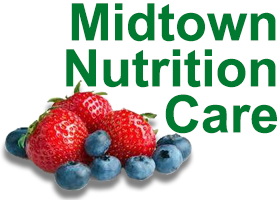SALT
Salt is a mineral made up of sodium and chloride. Sodium is found in every cell of our body. Our body uses sodium to send nerve impulses, make our muscles contract and relax, and maintain water balance in the body. Sodium can cause problems in the body if you eat too much, because too much sodium can raise your blood pressure. The maximum recommended amount of sodium you should eat in a day is 2,300 mg.
HOW TO KEEP FROM OVEREATING SODIUM?
Read food labels–try to buy things that have less than 300 mg of sodium per serving, less than 150 mg of sodium per serving is even better.
Prepare more meals at home–use fresh or frozen vegetables without sauces, fresh meats, and no-salt-added canned products to prepare meals.
If you use canned products preserved with salt, try to buy “lower sodium”, and rinse first to remove some of the salt.
Instead of salt, season food with garlic, onion, pepper, oregano, basil, chili pepper flakes, vinegar, and lemon juice.
Use small amounts of sauces, like salad dressings, dips, BBQ sauce, A1 sauce, soy sauce, teriyaki sauce, hot sauce, gravies, and marinades.
Buy “low sodium” or unsalted snacks.
FOODS HIGH IN SODIUM
Breads and rolls
Pizza
Deli sandwiches
Fast food sandwiches, like burgers or chicken sandwiches
Soup, especially canned soups
Burritos
Deli meats
Cured meats, like hotdogs, pepperoni, bacon, and sausage
Cereals
Fresh and processed poultry
Cheese
Jarred spaghetti sauce
Salad dressings
French fries
Pretzels, chips, popcorn
Soy sauce
Pickles
Brined, barbecued, cured, or smoked foods
